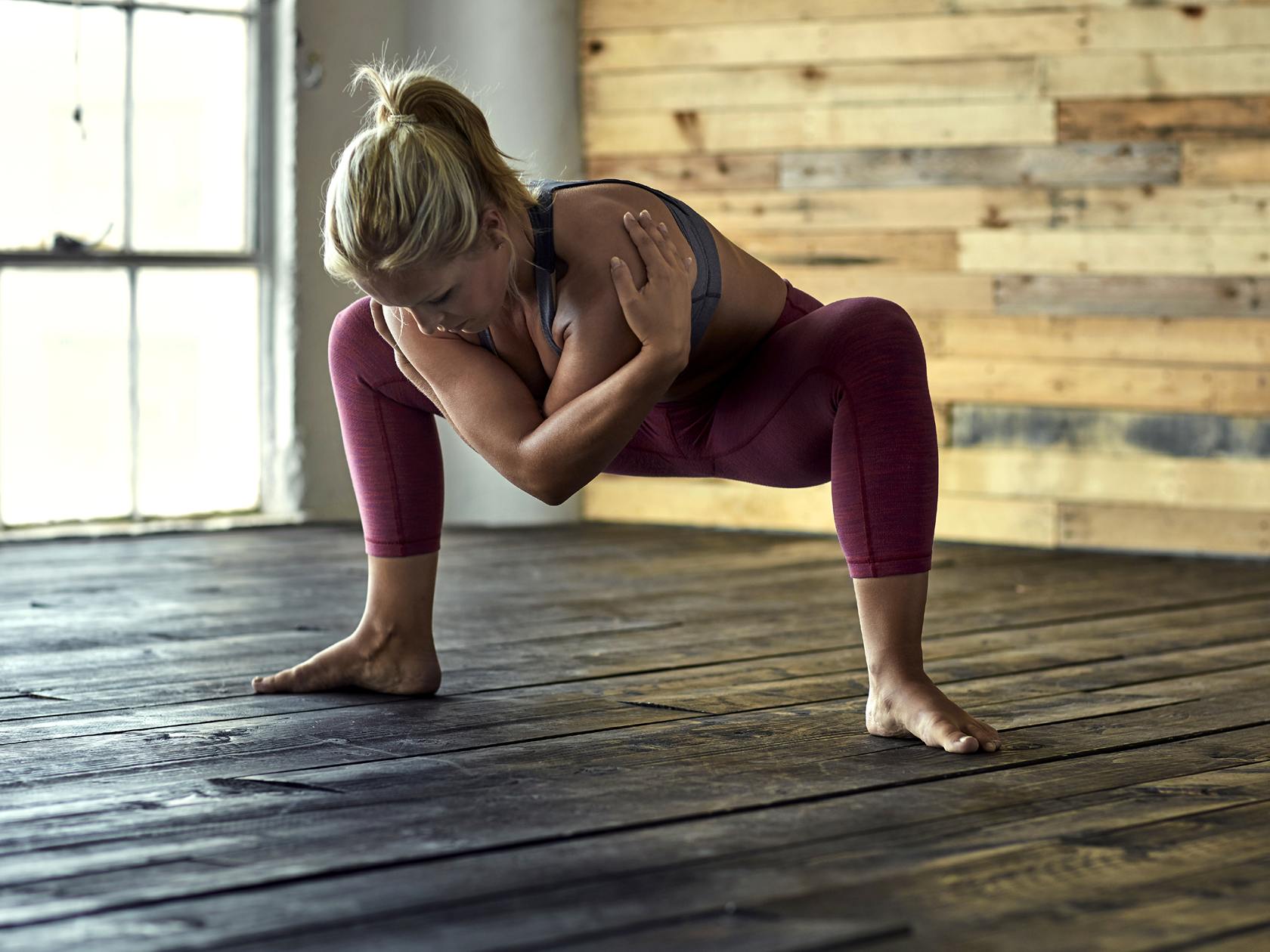What is the difference between mobility and flexibility training?
Stretching isn’t just about getting into the splits. Help your body to move better with these mobility flows that build strength and stability.
As a fitness writer, one of my favourite parts of my job is that I get to spend time talking to the best experts in the business about training, strengthening and recovering. Each have their own personal preferences, be it a love of running, weight lifting, yoga or a combination of them all. But there is one thing that everyone unanimously agrees on: the importance of including mobility training in their workout routines.
I discovered the benefits of mobility practice over a year ago, when despite ticking the strength training and yoga boxes, my body still felt achey. I didn’t understand why my hips were so tight, my lower back so sore, my neck so stiff. As lockdown rolls on (sorry for the reminder), I’ve noticed that mobility practice has kept my spine from feeling clunky and my hips from aching after a day sat at my bedroom desk.
You may also like
These dynamic stretches are the perfect way to warm up before a run
What is mobility training?
On the surface, a mobility routine might look similar to a stretching routine. But there are crucial differences, and that is where the benefits of it lie.
So, let’s define mobility. It’s basic meaning is having the ability to move freely and easily. Shona Vertue describes it in a mobility routine video on her YouTube channel (and one of my favourite, educational and easy-to-follow tutorials) as helping you to “develop stability and strength at the end of your range as best as possible… mobility practice is about developing stability.”
How is mobility different to flexibility?
When we compare that to flexibility, which means to bend easily, we can see the difference. In practical terms, a mobility practice will work through and improve the full range of motion of your muscles and joints, where as flexibility training will increase how deep you can hold a static stretch.
Yes, being able to stretch into the splits is great, but being able to lower yourself into a deep squat will definitely have more practical uses. That’s been the other outcome for me since implementing these practices into my workout schedule. I can squat deeper and move my shoulders further which isn’t just helpful for being all-round fit and healthy, but actually improves my workouts. By being able to move further into movements, I can engage more muscles. That makes my workouts more effective and my muscles stronger. It’s win-win-win for me.

You may also like
How do you warm up before weight training? Stylist Strong trainers answer the most googled questions
The best mobility routine
I follow that same video by Shona Vertue every single day. I do it immediately before my morning workouts, whether I’m lifting weights or running, and even on rest days before sitting at my desk for eight hours. The reason for that? “Your body is going to make you better at whatever it is that you do most often,” Shona explains. “So if you spend most of your day hunched over a desk, your body is going to make you better at that. It’s going to make your shoulders tighter, the back of your body a bit longer and hunched, your hips tighter, [in order] to help them sit in a chair for longer.”
Watch Shona Virtue’s daily 10 minute mobility routine:
I’d urge everyone to follow a tutorial while they get used to moving their body properly through mobility postures. However, if you’re looking for some quick moves, here are my favourite takeaways:
Hip circles
- On all fours, lift one leg off the ground and out to the side, keeping the knee bent.
- Squeeze the hip, glute and thigh to lift as high as possible.
- Then circle the leg back behind you so that the thigh is parallel to the ground, the ankle directly above the knee, before bringing back down to the starting position.
- During all of this, keep the back and pelvis still, so you’re only moving through the hip joint.
Do 10 reps on each side
Twisting child’s pose
- Come into to child’s pose on the floor, with your toes together, knees out wide and arms stretched in front of you.
- Place one hand on the opposite shoulder and rest your forehead on your forearm.
- From there, twist the bent arm up so the elbow reaches towards the sky.
- Keep the hips down so you’re only twisting through the back of the shoulder.
Repeat for five reps on each side
Internal hip rotation
- Sit on the floor with your hands behind you, feet flat on the ground slightly wider than hip-width apart and your knees up.
- Twist your knees from left to right, squeezing at the bottom to feel the activation in the hip of the knee that is turning inwards.
Repeat 10 times on each side
Follow @StrongWomenUK on Instagram for the latest workouts, delicious recipes and motivation from your favourite fitness experts.
Source: Read Full Article


